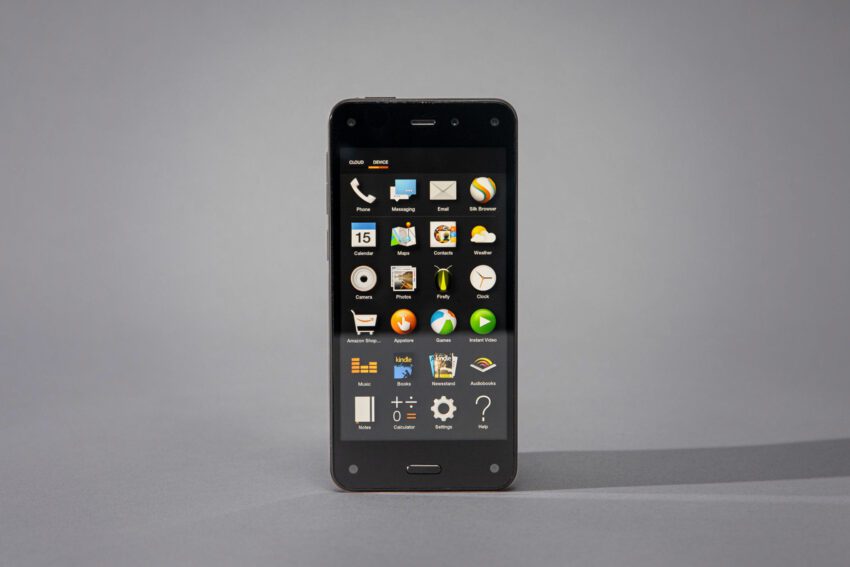
the tale of the fire phone amazon Amazon’s foray into the smartphone market with the Fire Phone serves as a cautionary tale of ambition overshadowed by execution.
the tale of the fire phone amazon
Introduction to the Fire Phone
In 2014, Jeff Bezos, the then-CEO of Amazon, made a bold decision to enter the competitive smartphone market. The result was the Fire Phone, a device that aimed to redefine mobile technology but ultimately fell short of expectations. With a plethora of features and innovative ideas, the Fire Phone was designed to integrate seamlessly with Amazon’s ecosystem. However, the execution of these ideas proved to be problematic, leading to its rapid decline in popularity.
Features and Innovations
The Fire Phone was launched with an impressive feature set that included a 3D display, multiple cameras, and a unique user interface. However, these features were not enough to win over consumers.
3D Display Technology
One of the standout features of the Fire Phone was its 3D display, which Amazon branded as “Dynamic Perspective.” This technology utilized four front-facing cameras to track the user’s head movements, creating a parallax effect that made images appear three-dimensional. While this feature was visually striking, it was largely seen as a gimmick rather than a practical enhancement. Users found that the novelty wore off quickly, and the 3D effects did not significantly improve the overall user experience.
Camera Array
The Fire Phone boasted an impressive array of cameras—specifically, five cameras in total. This included a 13-megapixel rear camera and four front-facing cameras dedicated to the Dynamic Perspective feature. However, despite the high camera count, the quality of the photos taken with the Fire Phone did not meet the expectations set by its competitors. Users reported that the camera struggled in low-light conditions and that the software was not as intuitive as that of rival smartphones.
Home Screen and “Delighters”
Another ambitious feature was the Fire Phone’s home screen, which was filled with what Amazon referred to as “delighters.” These were essentially widgets designed to showcase Amazon products and services, encouraging users to make purchases directly from their home screen. While the intention was to create a personalized shopping experience, many users found the interface cluttered and overwhelming. The constant promotion of Amazon products detracted from the overall usability of the device, leading to frustration among consumers.
Amazon’s Vision vs. Consumer Needs
At its core, the Fire Phone was designed to drive sales on Amazon. Bezos envisioned a device that would make it easier for consumers to shop online, but this vision did not align with what users were looking for in a smartphone. While the Fire Phone had a range of features, the primary focus on shopping functionality alienated potential buyers who sought a more balanced smartphone experience.
Market Context
When the Fire Phone was released, the smartphone market was already dominated by established players like Apple and Samsung. These companies had built strong ecosystems and loyal customer bases, making it difficult for a newcomer like Amazon to gain traction. The Fire Phone’s unique features, while innovative, did not provide enough of a competitive advantage to sway consumers away from their preferred brands.
Consumer Reactions
Initial reviews of the Fire Phone were mixed, with many critics praising its ambitious features but ultimately deeming it a failure in execution. Users expressed disappointment with the device’s performance, particularly in terms of battery life and software stability. The overwhelming focus on Amazon services also led to complaints about the lack of essential apps and features that users had come to expect from a modern smartphone.
Sales and Market Performance
The Fire Phone’s sales figures reflected its lack of consumer appeal. Within a few months of its launch, Amazon was forced to significantly reduce the price of the device, slashing it from $649 to just $199 in an attempt to clear inventory. Despite these efforts, the Fire Phone struggled to gain a foothold in the market, ultimately leading to its discontinuation less than a year after its release.
Financial Implications
The failure of the Fire Phone had significant financial implications for Amazon. The company reportedly lost over $170 million on the device, a substantial sum for a company of its size. This loss raised questions about Amazon’s strategy in the hardware market and whether it should focus on its core competencies rather than venturing into unfamiliar territory.
Lessons Learned
The story of the Fire Phone serves as a valuable lesson for companies looking to innovate in competitive markets. Several key takeaways can be drawn from Amazon’s experience:
- Understand Consumer Needs: It is crucial for companies to align their product offerings with consumer demands. The Fire Phone’s focus on shopping functionality did not resonate with users seeking a comprehensive smartphone experience.
- Avoid Overcomplication: While innovative features can set a product apart, they should enhance the user experience rather than complicate it. The Fire Phone’s myriad features often led to confusion rather than satisfaction.
- Market Research is Essential: Thorough market research can provide insights into consumer preferences and competitive dynamics. Understanding the landscape can help companies make informed decisions about product development.
Conclusion
The Fire Phone stands as a testament to Amazon’s ambitious vision and willingness to take risks. However, it also highlights the importance of aligning innovation with consumer needs and market realities. While the device ultimately failed to capture the hearts of consumers, it provided valuable insights that could inform future endeavors in the tech industry. As Amazon continues to innovate and expand its product offerings, the lessons learned from the Fire Phone will likely play a crucial role in shaping its future strategies.
Source: Original report
Was this helpful?
Last Modified: November 10, 2025 at 5:40 am
1 views















